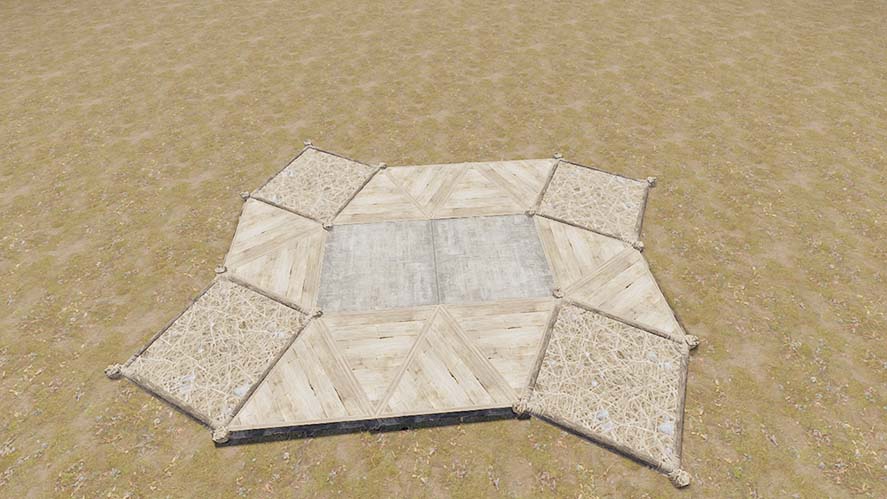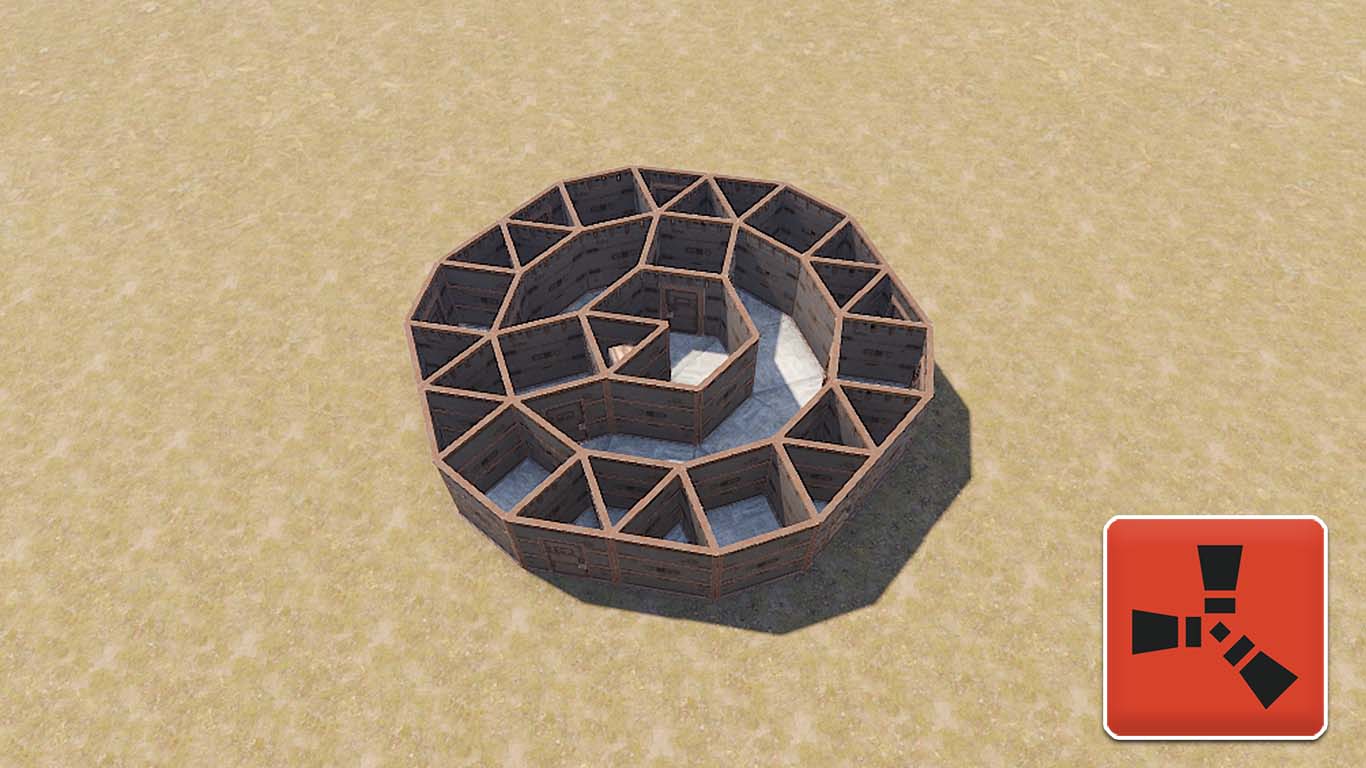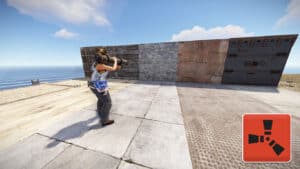Building a base in Rust is one of the most fun aspects of the game. But you can easily do it wrong if you don’t learn the meta.
You might think at the beginning that building a nice square house is the way to go. However, veteran players have come up with a building strategy that will protect your base from any invested raiders.
Recommended Read: What to Do After Building Your Base in Rust
The honeycomb-building strategy is based on building your Rust base in such a way that it kinda represents a honeycomb with its many layers.
To build a honeycomb in Rust, you just need to expand your base with triangle foundations and build walls on top of them to create extra layers for raiders to go through.
Table of Contents
How to Honeycomb Your Base in Rust
Most teams in Rust build their base using the honeycomb technique to protect their loot better and confuse and annoy raiders.
To build a honeycomb in Rust, you will just need to place triangle foundations around your base. Then, start building walls in all the possible places. If someone takes down one of your walls, they’d be stuck in one of the triangles with walls in all directions.
If you want to make a perfect honeycomb around your base, you will also have to sometimes place square foundations just to make sure that there is no way in.
You should do this in all directions surrounding your base, including the exits to them. These spots are the most vulnerable, as players will often target them just for seeing a door.
To make your honeycomb even more deadly, you can place a few fake entrances on the outer layers of the honeycomb. Build a few doorways that exist only to trick raiders into breaking them down. Thus, they will end up in a triangle surrounded by walls, losing precious explosives.
The honeycomb can also be done for the roof, where you build new levels that only exist to protect the real roof.
Players should aim to build the honeycomb with resources that they know they will not want to change. For example, many foundations will be walled off.
This means that you will have to destroy your own walls to improve the foundation in those locations. If you’ve built a wooden foundation in a walled-off triangle, you will have to destroy everything to get there to upgrade that foundation to stone.
Basic Honeycomb Designs
The usual starting base design is just a simple 2 by 1 square base. In that case, you can start by making triangle foundations all around the existing base.
You will see that at some point, you will get stuck, and you won’t be able to use triangles anymore.

That is when you start to place square foundations again. For the first layer of the honeycomb, you should only have 4 square foundations.
You can see in the image above we made the starting base foundation out of HGM, the triangles out of wood, and the honeycomb squares out of straw. The design should be similar if you started your base with a single 1 by 1 square.
If your starting base is a circle made out of 6 triangles, then you can continue building triangles forever around your base. This labyrinth might even get confusing for you at some point, though.
Disadvantages of a Honeycomb Base
Though the honeycomb will protect you from most attacks in Rust, it will not protect you from an incredibly high maintenance cost.
At the moment, it is almost impossible for a solo player or a small group to build and maintain a larger honeycomb without having to play all day, every day.
The honeycomb eats resources like there’s no tomorrow. But it is incredibly important if you want to keep your base safe.
If the costs of the honeycomb start getting too high, you can start implementing trap turret rooms instead of a large, never-ending labyrinth of walls.
That’s everything you need to know about how to build a honeycomb base in Rust!
Have any input or suggestions for this guide? Let us know in the comment section below.




